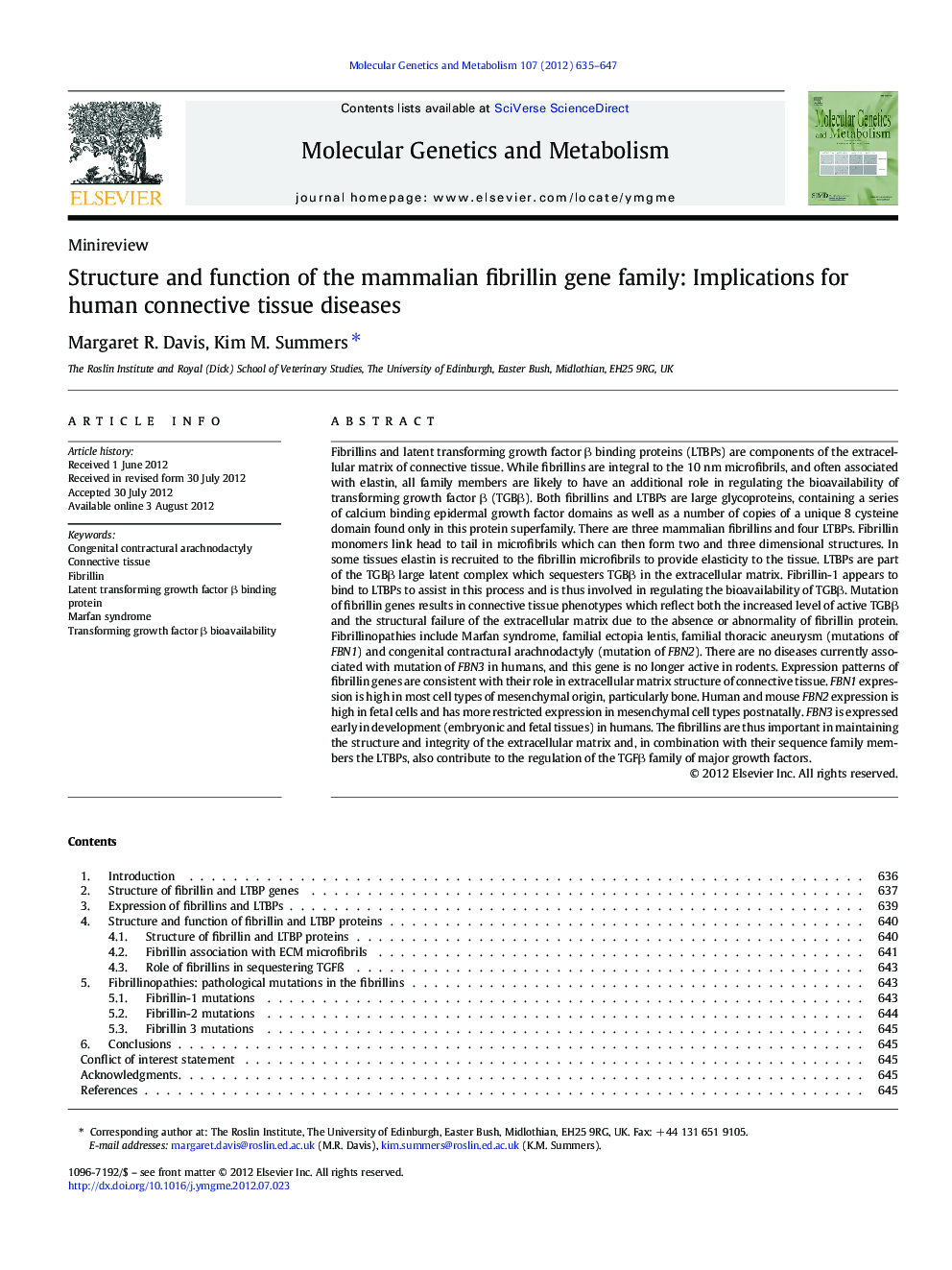| کد مقاله | کد نشریه | سال انتشار | مقاله انگلیسی | نسخه تمام متن |
|---|---|---|---|---|
| 1998316 | 1065793 | 2012 | 13 صفحه PDF | دانلود رایگان |

Fibrillins and latent transforming growth factor β binding proteins (LTBPs) are components of the extracellular matrix of connective tissue. While fibrillins are integral to the 10 nm microfibrils, and often associated with elastin, all family members are likely to have an additional role in regulating the bioavailability of transforming growth factor β (TGBβ). Both fibrillins and LTBPs are large glycoproteins, containing a series of calcium binding epidermal growth factor domains as well as a number of copies of a unique 8 cysteine domain found only in this protein superfamily. There are three mammalian fibrillins and four LTBPs. Fibrillin monomers link head to tail in microfibrils which can then form two and three dimensional structures. In some tissues elastin is recruited to the fibrillin microfibrils to provide elasticity to the tissue. LTBPs are part of the TGBβ large latent complex which sequesters TGBβ in the extracellular matrix. Fibrillin-1 appears to bind to LTBPs to assist in this process and is thus involved in regulating the bioavailability of TGBβ. Mutation of fibrillin genes results in connective tissue phenotypes which reflect both the increased level of active TGBβ and the structural failure of the extracellular matrix due to the absence or abnormality of fibrillin protein. Fibrillinopathies include Marfan syndrome, familial ectopia lentis, familial thoracic aneurysm (mutations of FBN1) and congenital contractural arachnodactyly (mutation of FBN2). There are no diseases currently associated with mutation of FBN3 in humans, and this gene is no longer active in rodents. Expression patterns of fibrillin genes are consistent with their role in extracellular matrix structure of connective tissue. FBN1 expression is high in most cell types of mesenchymal origin, particularly bone. Human and mouse FBN2 expression is high in fetal cells and has more restricted expression in mesenchymal cell types postnatally. FBN3 is expressed early in development (embryonic and fetal tissues) in humans. The fibrillins are thus important in maintaining the structure and integrity of the extracellular matrix and, in combination with their sequence family members the LTBPs, also contribute to the regulation of the TGFβ family of major growth factors.
► Fibrillins and LTBPs form a unique family of extracellular matrix proteins.
► Fibrillins and LTBPs are expressed in connective tissues with differing specificity.
► Fibrillins form 10 nm microfibrils which support connective tissues.
► Through interactions with LTPBs, fibrillins also regulate bioavailability of TGFβ.
► Mutations in fibrillin genes cause connective tissue diseases.
Journal: Molecular Genetics and Metabolism - Volume 107, Issue 4, December 2012, Pages 635–647